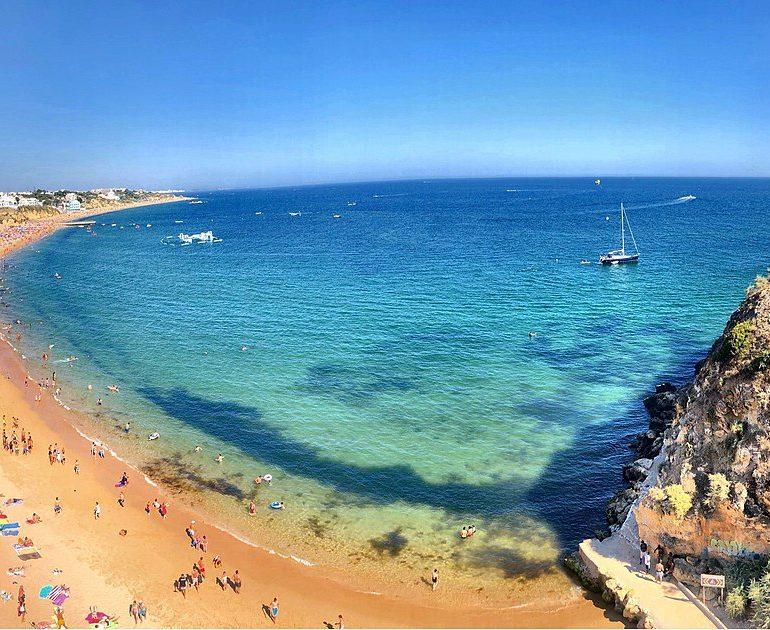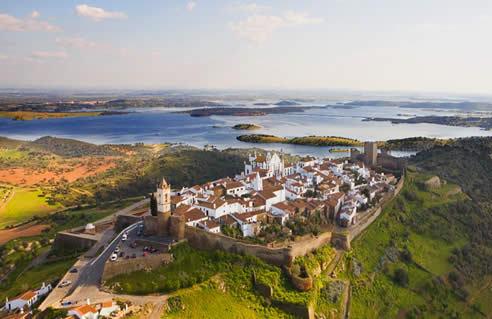Braga is one of those cities that doesn’t just sit in history books — it walks beside you. Founded by the Romans more than two thousand years ago, it has grown into Portugal’s oldest continuously inhabited city. And yet, spend an afternoon in Braga, and you’ll notice how young it feels: university students spilling out of lecture halls, locals meeting over espresso, and festivals turning entire streets into living theater.
What this really means is that Braga isn’t a museum piece. It’s a place where the past and present share the same table — granite churches on one side, neon-lit cafés on the other. As a local told me once, “Braga is old enough to remember everything and young enough to reinvent itself every day.”
If you’re planning a trip to northern Portugal, this city deserves space on your itinerary. Let’s break down the top things to do in Braga — the landmarks, food, festivals, and day trips that make it unforgettable.

Why Visit Braga?
For centuries, Braga has been known as the “city of archbishops”. Its cathedral predates Portugal itself, and Holy Week here is the most solemn in the country. But Braga is also a city of students, startups, and cultural projects that push boundaries.
Think of it this way: if Lisbon is Portugal’s capital and Porto its creative rebel, Braga is the wise elder who still surprises you with unexpected energy.
Braga’s History and Landmarks
Sé de Braga (Braga Cathedral)
You can’t understand Braga without stepping into its cathedral. The Sé is the oldest in Portugal, built in the 11th century when this region was still defining itself against Moorish rule. Inside, you’ll find Gothic chapels, Manueline carvings, and the tombs of Henry of Burgundy and Teresa of León, parents of Portugal’s first king.
Walking through the Sé feels less like a visit and more like a lesson — not in dates, but in continuity. This is where Portugal’s Christian identity rooted itself, centuries before the Age of Discoveries or the modern republic.
A local guide summed it up: “Lisbon may be the capital now, but Braga is where the idea of Portugal was born.”
Roman Braga: Bracara Augusta
Long before cathedrals, there were Roman roads. Founded as Bracara Augusta in 16 BC, Braga was once a hub of the Roman Empire. You’ll still find pieces of that past underfoot: the Roman Baths of Maximinos, the foundations of a theater, aqueduct remnants, and mosaics at the Dom Diogo de Sousa Archaeological Museum.
The best part? Roman Braga doesn’t feel locked away. Walk through the city, and you’ll notice ancient stones built into walls, roads tracing old Roman layouts, and whispers of empire in an otherwise modern town.

Bom Jesus do Monte: Braga’s Iconic Pilgrimage Site
If there’s one image that defines Braga, it’s the baroque stairway of Bom Jesus do Monte.
This sanctuary, perched above the city, is reached either by climbing 577 ornate steps or by riding a 19th-century funicular — the oldest water-powered one still in operation. Each landing along the staircase is symbolic: fountains represent the five senses, statues embody the virtues, and allegories guide pilgrims toward spiritual reflection.
At the top, the sanctuary gleams white against the forest, and the view stretches for miles.
Even for non-religious visitors, Bom Jesus is an experience. A pilgrim I passed on the steps whispered, “Every step is a prayer.” That’s exactly how it feels — a journey both physical and symbolic.
The Young and Contemporary Side of Braga
Braga isn’t only about churches and ruins. Thanks to the University of Minho, the city is alive with youthful energy.
Braga’s Café Culture
Start with a seat at Café Vianna, the Belle Époque institution overlooking Praça da República. Students, writers, and business meetings all blend here. Then contrast it with Spirito Cupcakes & Coffee, a neon-lit dessert bar that feels like Lisbon’s Bairro Alto dropped into Braga.
Cafés here aren’t just about caffeine. They’re about conversation — a reminder that Braga, despite its sacred aura, thrives on human connection.
Modern Art and Creative Spaces
One of the best surprises in Braga is gnration, a cultural space inside a former police station. It hosts digital art exhibitions, experimental concerts, and workshops that draw international artists.
As one local artist told me, “Braga has always been about tradition. Now, we’re teaching it how to experiment.”
That mix of reverence and rebellion is what makes the city fascinating.
Festivals in Braga
Braga knows how to stage a show.
Semana Santa (Holy Week)
Braga’s Holy Week is one of the most elaborate in Europe. Processions move by candlelight, hooded penitents walk in silence, and ancient rituals fill the streets. Even if you’re not religious, the atmosphere is unforgettable.
Braga Romana (Roman Festival)
Every May, Braga travels back two millennia. Gladiator reenactments, Roman markets, toga parades — the whole city gets involved. Kids love it, history buffs adore it, and locals treat it as their own time machine.
Noite Branca (White Night Festival)
On a September night, Braga transforms into an open-air stage. Everyone dresses in white, music pulses from squares, and performances pop up across the city. It’s a festival that feels more youthful than religious — Braga’s playful side in full display.

Best Places to Stroll in Braga
Praça da República
The main square is the heart of Braga. Sit at a terrace café, watch the fountains, and let the rhythm of the city unfold.
Jardim de Santa Bárbara
Perhaps the most photogenic spot in town. This garden frames Gothic ruins with manicured flowerbeds. In spring, it’s a riot of color.
Rua do Souto
The pedestrian artery of the old town. Walk from Arco da Porta Nova to Praça da República, stopping for pastries or peeking into side chapels.

What to Eat in Braga
Braga belongs to the Minho region, where food is hearty and comforting.
Classic Dishes
- Bacalhau à Braga: Fried cod layered with onions and peppers.
- Frigideiras: Meat-filled pastries, a local street snack.
- Papas de Sarrabulho: A rich winter stew, thickened with bread and spices.
Pair it with Vinho Verde
This crisp, slightly sparkling wine is produced in the Minho region. Locals drink it with almost everything, and it’s the perfect match for Braga’s hearty dishes.
As one restaurant owner told me, “We don’t cook for tourists. We cook the way our grandmothers did.”
Day Trips from Braga
Braga makes an excellent base for northern Portugal.
Guimarães
Just 25 minutes away, this is the birthplace of Portugal, complete with a medieval castle and UNESCO-listed old town.
Peneda-Gerês National Park
Mountains, waterfalls, and ancient villages. Portugal’s only national park is about an hour away, and it feels like a world apart.
Viana do Castelo
On the Atlantic coast, this town combines maritime tradition with Belle Époque charm. Don’t miss the hilltop sanctuary of Santa Luzia for sweeping views.
Practical Travel Tips
Getting to Braga
From Porto, it’s a 40-minute train ride — easy for a day trip, better for a few nights.
Best Time to Visit
- Spring: Festivals and blooming gardens.
- Summer: Busy, lively, sometimes hot.
- Autumn: Warm days, harvest season.
- Winter: Quiet, atmospheric, especially during Christmas lights.
Where to Stay
- Vila Galé Collection Braga: Boutique hotel in a former convent.
- Urban design hotels: Scattered through the center, perfect for those who want something stylish.

Why Braga Belongs on Your Portugal Itinerary
Braga isn’t loud about its treasures. It whispers them to you — through bells ringing from ancient towers, students laughing over coffee, or pilgrims tracing steps that have been walked for centuries.
You come for the history. You stay because the city still feels alive.
Or as a Bracarense put it, “Porto has the river, Lisbon has the sea. Braga has time. Old time, young time — all of it, together.”




